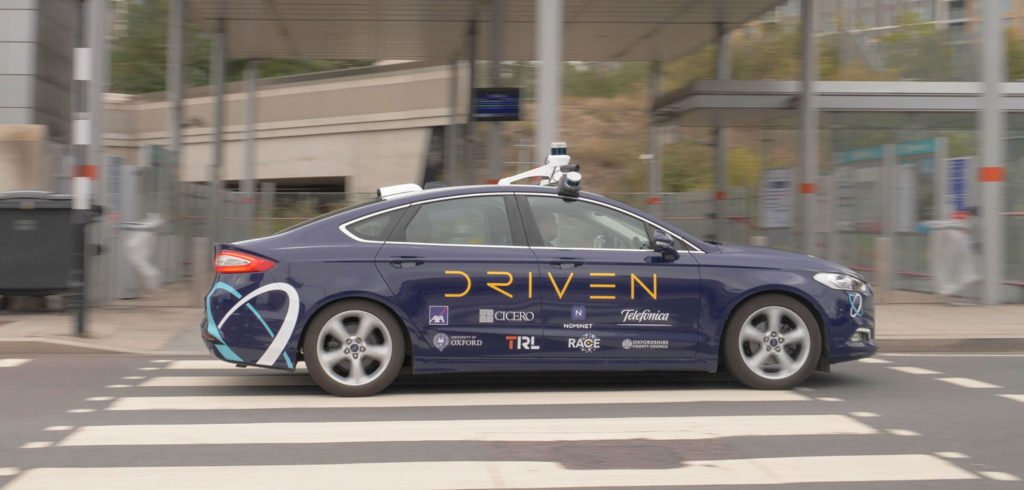Innovations that have the potential for global impact aren’t necessarily well received in their early stages. There are many examples over the ages, such as microwaves and mobile phones in the 1970s, not to mention cars when they first appeared on roads in the 19th century. Used to carriages pulled by horses, people were so alarmed by the speed of these new vehicles that each car required a pedestrian to walk ahead of it waving a red flag.
Now, the automotive industry is on the cusp of another great change that will impact roads and transportation for generations to come – connected autonomous vehicles (CAVs) are moving ever closer to becoming a reality.
The Society of Motor Manufacturers & Traders (SMMT) believes the self-driving car industry has the potential to bring a £62bn economic boost to the UK economy by 2030, not to mention position the country as a world leader in this technology as well as tackle some key issues such as emissions, congestion and isolation.
According to the Department of Transport’s recently published engagement report into the public attitudes toward driverless cars, people are becoming familiar with the idea of CAVs and recognize automation as an inevitable technological progression. That said, many still question whether the transportation infrastructure will be ready; they view the path to an automated road network as complicated.
And it is a complicated task, but it is also one well on its way to being completed thanks to projects like Driven, which has been exploring the ecosystem of a fleet of CAVs in two of the UK’s busiest cities – Oxford and London. Approaching its end after two and a half years of work, the project consortium – including Nominet – came together at the Olympic Park in Stratford at the start of October to showcase its achievements so far.
In all, over 200 people were able to take a ride in the autonomous vehicles around Stratford during the week-long event, while partners provided presentations and demonstrations of their work. Encouragingly, riders reported the car experience was reassuringly boring; music to the ears of those who are working so hard to ensure safety and security.
Yet, to paraphrase Oxbotica’s Dr Graeme Smith, it’s not all about the cars. While the vehicles certainly steal the show at events like these, the project is so important because it is far broader than the act of creating a car that operates without a driver. Driven is looking at the whole connected autonomous vehicle ecosystem, from transportation authorities and local councils to data trading, cybersecurity, connectivity and real-time insurance. This not only makes the project unique, it also represents a true step toward deployment, with this project serving as an important milestone in the journey to driverless cars becoming the norm.
This was only achieved by the breadth by the consortium of specialists and experts from a variety of industries that came together for the project. Led by Oxbotica, the collective included Nominet, Axa XL, Telefonica, TRL, the University of Oxford, Race, Transport for London and Oxfordshire county council.
Additionally, the varied but overlapping work of all was being done with cars in complex urban environments – anyone who knows London and Oxford will attest to the challenging driving conditions. Projects like Driven are vital to ensure we understand the difficulties and are finding workable solutions.
The role of cybersecurity for CAVs cannot be overlooked. During this project, our role was to minimize threats to operations through the deployment of existing security technology, such as our own DNS analytics tool NTX, coupled with the development of new software to help CAV fleet operators. This was achieved by building a platform that underpins the three core facets of a CAV cybersecurity framework: risk identification and protection, threat detection, and response/recovery if a security event is detected.
Risks and threats to CAV systems can be wide ranging and diverse, from infrastructure and vehicle network threats to emerging cyberphysical threats that target the sensors of an autonomous vehicle. For instance, a communications-jamming attack could leave an automated fleet without remote monitoring or ability to change objectives mid-journey.
Some of these types of threats can be localized in time and space – such as the presence of a roadside signal jammer– and so we created a dynamic situational risk map which informs operators on the potential risk of their planned route.
 Driven has successfully demonstrated a key milestone toward an autonomous future and is now nearing its end – but the story doesn’t end with it. We will be taking all our learning into a new project, Endeavour, a £15m (US$19.2m) venture, supported by Innovate UK and spearheaded by Addison Lee Group, to commercially operate a fleet of 10 autonomous ridesharing vehicles in London’s Greenwich.
Driven has successfully demonstrated a key milestone toward an autonomous future and is now nearing its end – but the story doesn’t end with it. We will be taking all our learning into a new project, Endeavour, a £15m (US$19.2m) venture, supported by Innovate UK and spearheaded by Addison Lee Group, to commercially operate a fleet of 10 autonomous ridesharing vehicles in London’s Greenwich.
There is little doubt that autonomous vehicles will be a part of the future. That said, the dream will only be achieved if companies such as Nominet prepare the country’s infrastructure to cope with and manage this complex approach to transportation.
Projects like Driven are vital steps toward this goal, bringing together many minds and a variety of experts to approach the challenge from every angle, lending their expertise to a wide variety of issues. Only then can we find solutions, prepare the country and reap all the far-reaching rewards the CAV ecosystem will bring.


